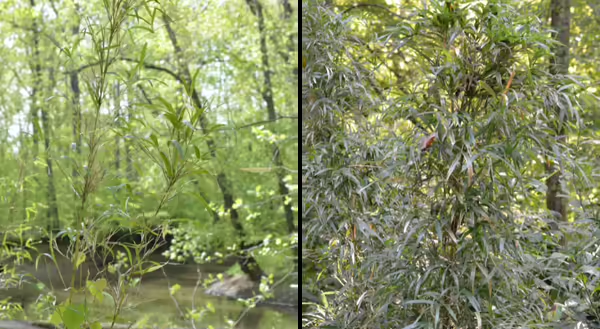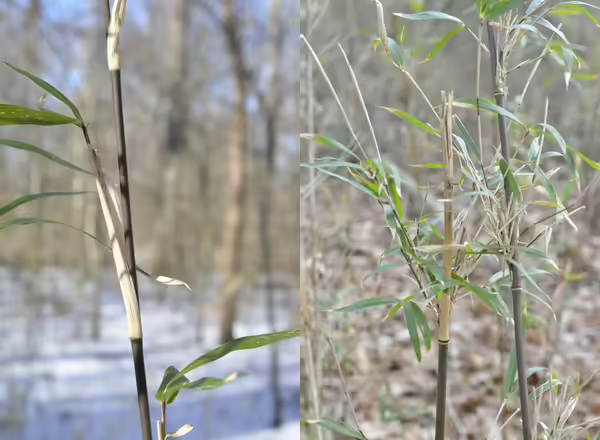
Even during the coldest of winter days, one grass continues to boast green foliage – Giant Cane. Giant Cane (Arundinaria gigantea) is a unique grass because it is the only native species of bamboo found in Illinois. Once widespread throughout the bottomland forests of southern Illinois, many canebrakes that once existed have declined due to habitat alteration.
Growth habit
Cane can grow quite tall, reaching heights of up to 20 feet! I typically see it growing between 4 and 10 feet tall. It prefers to grow in moist areas, like bottomland forest and along rivers and wetlands. Giant Cane is a clonal plant, often forming large colonies. It is unique in that it only flowers once in its lifetime, and then dies. Colonies usually take about 15 years to mature before flowering. I have yet to see Giant Cane in bloom – have you?
Identification characteristics
Identification of Giant Cane is straightforward. If you’ve ever cared for bamboo as a houseplant, you’re familiar with its woody stem that looks segmented. Giant Cane has the same woody, hollow, segmented stem. If you are in a natural area where ornamental bamboo has not been planted and you see this type of stem, it’s likely you’re looking at Giant Cane.
Its leaves are shiny and dark green. They can vary in size, sometimes short and broad (below left) and other times thinner and more tapering. You can find a few bristle-like hairs at the top of the leaf sheath.
Have you seen Giant Cane before?


Never miss a new post! Sign up for our email list.
ABOUT THE AUTHOR: Erin Garrett is a Natural Resources, Environment, and Energy Educator for University of Illinois Extension serving Alexander, Johnson, Massac, Pulaski, and Union counties. Erin develops and delivers high impact programming to adults and youth to help them develop an appreciation for natural resources and to empower them to make small changes to positively impact the environment. Erin’s programming focuses on why homeowners should consider choosing native plants, how to support native pollinators, how to identify grasses, how to identify and manage invasive species, and developing an appreciation for prairie ecosystems.
ABOUT THE BLOG: Grasses at a Glance dives into grass identification, focusing on tips and tricks that make grass identification possible. Get information about native and non-native species, how to tell look-alikes apart, and which grasses you can find in Illinois. Never miss a new post! Sign up for our email list.
Giant Cane, Arundinaria gigantea, is the only native woody grass found in Illinois. It was once widespread in canebreaks in southern Illinois, but has since declined in abundance due to habitat alteration. Giant Cane can often be found in colonies, since it spreads through rhizomes. The easiest...